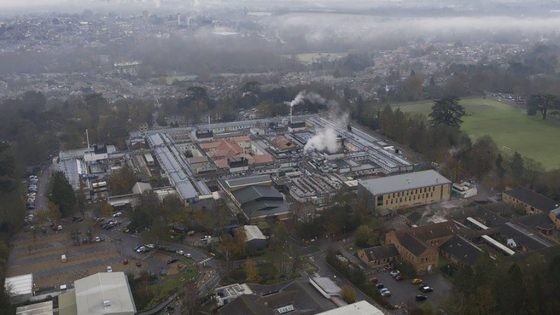The New Hospital Programme will switch its focus to facilities containing reinforced autoclaved aerated concrete (RAAC), the government has announced.
The Budget committed to continuing the major hospital programme but no longer aims to deliver 40 hospitals by 2030.
Chancellor Rachel Reeves told the House of Commons that health secretary Wes Streeting would set out more details from his review of the New Hospital Programme “in the coming weeks”, with the full review to be published next year.
But she said its short-term focus would be on rebuilding seven hospitals affected by the RAAC crisis including West Suffolk Hospital in Bury St Edmunds and Leighton Hospital in Crewe.
She added: “Many NHS buildings have been left in a state of disrepair. So we will provide £1bn of health capital investment next year to address the backlog of repairs and upgrades across our NHS.”
Documents released by the Treasury show that the £1bn covers both RAAC remediation and work to “make inroads into the existing backlog of critical maintenance, repairs and upgrades across the NHS estate” in order to protect staff and patients and boost productivity.
They also say the government will provide “continued delivery of the New Hospital Programme on a more sustainable and deliverable footing, moving swiftly to rebuild hospitals wholly or primarily built with RAAC or which are in build.
“Remaining schemes will be delivered through a rolling programme of major investment, as part of the government’s commitment to providing hospital infrastructure investment.”
The paper also notes that the independent report into the health service carried out by Lord Darzi this summer found that the NHS had been “starved of capital” funding during the 2010s, identifying a £37bn shortfall that has prevented hospitals being productive.
“The government will take significant steps to address this,” the documents add, promising a capital expenditure increase of £3.1bn in 2025/26 compared to 2023/24 outturn, rising to £13.6bn, a two-year average real terms growth rate of 10.9 per cent.
Other spending announcements include a dedicated fund to upgrade 200 GP surgeries in England – including through “improved use of existing buildings and space”.
A further £26m has been allocated to opening new mental health crisis centres, to reduce pressure on A&E.
Saffron Cordery, deputy chief executive of NHS Providers, which represents hospital trusts, said years of under-investment meant hospitals remain in a very difficult position despite the announcements, with almost £14bn needed in total to fix England’s backlog of estate repairs.
“Vital bits of the NHS are literally falling apart, putting quality of care and sometimes the safety of patients and staff at risk. We welcome the government’s commitment to prioritise increasing capital investment across the NHS,” she said.
“Trusts in the New Hospital Programme continue to wait for clarity on the funding and delivery timeline for their new buildings. The maintenance backlog in trusts with NHP schemes is nearly £5.7bn – more than 40 per cent of the total.
“To make the NHS more sustainable, innovative and as productive as possible requires long-term, cross-government support to nurture a thriving workforce plus capital investment in buildings and facilities – including digital technology which can transform patient care and free staff from time-consuming admin.”
The New Hospital Programme was announced in 2019 by former prime minister Boris Johnson to build 40 new hospitals by 2030, under a £20bn budget. However, its deliverability has been questioned in the years since.
Streeting said in July that he would not commit to the 2030 deadline and he was “not prepared to offer people false hope about how soon they will benefit from the facilities they deserve”.
The impact of RAAC on healthcare estates has been a concern since at least 2021, when it emerged that West Suffolk Hospital and Hinchingbrooke Hospital in Cambridgeshire had identified significant risks to patient safety due to structural issues caused by the material.
Last year the National Audit Office warned that RAAC-hit hospitals may have to close before they are rebuilt under the programme. The watchdog also said it had no confidence the programme would deliver its latest target of 32 new hospitals by 2030.

